Part 2: Dances of Western Europe and its Colonies
5 Dances of France, Spain, Italy, and Portugal
1. The Romance Countries of Western Europe
The major languages of the countries we are looking at in this chapter (Spanish, French, Portuguese and Italian; as well as the minority languages Catalan (Spain), Occitan (France), Corsican (Italy)) are all Romance languages, meaning they are direct descendants of Latin. This is because these countries were all major parts of the Roman empire (27 BCE-476 CE). During the Middle Ages (476-1453 CE) these countries all fragmented into small kingdoms and principalities, but eventually developed into major monarchies, and then, much later, into modern democracies (Spain, Portugal, parts of France and Italy having flirted with fascist dictatorships before that). The main Romance countries of Western Europe are France, Portugal, Spain and Italy. Although one also find Romance speakers in Belgium, Luxembourg, Switzerland, Andorra, Monoco, and San Marino. Today all these countries are majority Catholic, although they all also have significant religious minorities through migration and historical pockets of ethnic minorities. The four main countries are all members of the European Union and are all major economic powers.
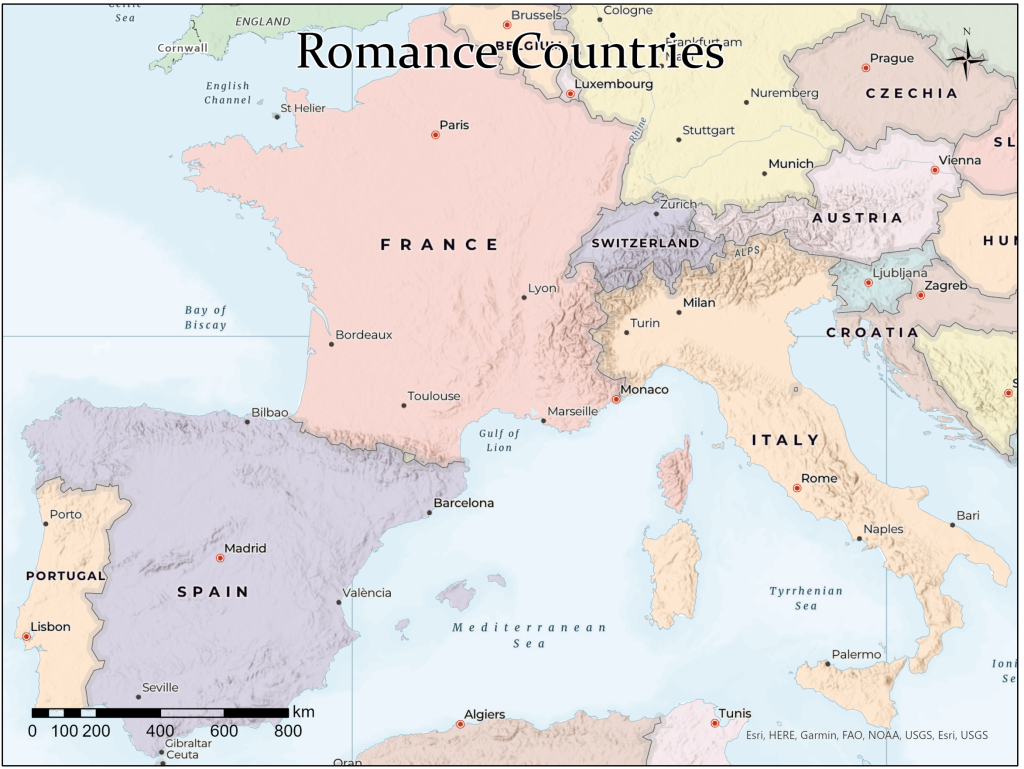
2. France
2.1. Geography and History
France is a country bordered on the North with Belgium and Luxembourg, on the east with Germany, on the west with the Atlantic and on the south with Spain and the Mediterranean Sea. Within the country, there are several distinct cultural regions, including Normandy in the north, Occitanie in the south, Brittany in the west, Alsace on the border with Germany, the Loire valley, Aquitaine in the southwest, and Auvergne in the southeast.
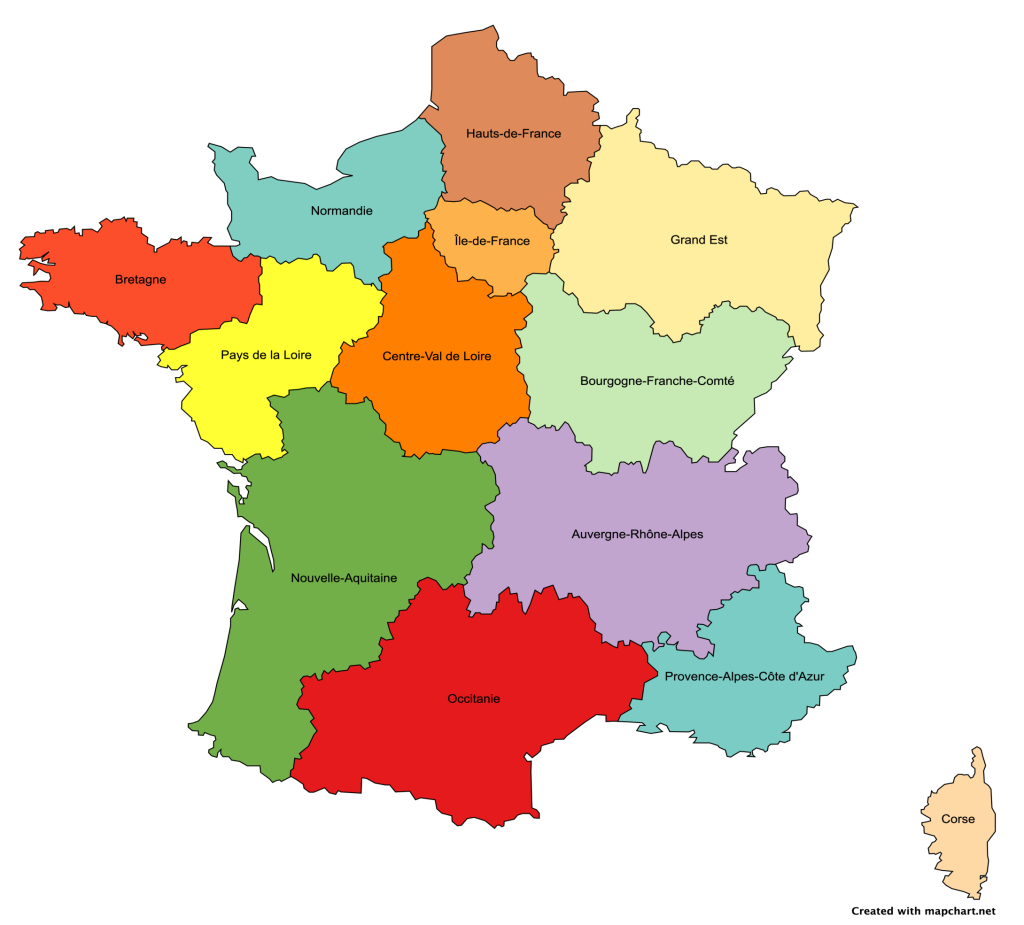
When the Romans first arrived in what is now France, they encountered a number of Celtic tribes collectively called the Gauls. The Gauls were quickly assimilated into the Empire. When the Roman empire collapsed, France was invaded by a Germanic tribe from the west called the Franks (who gave their names to France) and by Vikings who settled in Normandy. During the dark ages, France was fragmented into several different small kingdoms, which were unified into a single feudal kingdom by the Middle Ages. Despite this unification and certain linguistic commonalities, the unique provincial cultural characteristics over music and dance continue to this day. The French monarchy became the model for absolute power, wealth, and decadence that kings and queens all over Europe aspired to. Despite being a place for culture, this of course led to horrible inequities, which in turn triggered the bloody French Revolution in 1789. The philosophies over human rights that emerged from the French revolution gave rise to ideas of democracy that heavily influenced the US Constitution and Bill of Rights. The French were perpetually at war with the English right up until the 20th century, when British and French interests were aligned against Germany and Austro-Hungarian Empire in the First and Second World War. France was invaded during both wars and the country suffered a great deal of deprivation at the hands of its invaders. But France was also a colonial power during the 18th century, and it caused much misery among the people in Indochina (now Vietnam, Laos, and Cambodia), Canada, French Polynesia, Haiti, Algeria, and other countries. They left their cultural mark on these countries too, which will be discussed in the next chapter. Today France is a liberal democracy which is part of NATO and the EU, and is a major nuclear power.
2.2. French Court Dances and Bourrées
The French court of the renaissance was incredibly influential in terms of the dance traditions of Europe. Court dances like the minuet became the foundations that underlie almost all set dances like Scottish Country Dance, English Country Dance, American contra dance, square dance, and many of the set dance traditions of Europe in other countries. In France itself, these dances show up in the folk tradition as dances called Bourrées. Set dances in the folk tradition were almost certainly people of lower social standing imitating the manners and customs of the nobility in the court.
French court dances would of course been done in the most recent fashions of the day, but Bourrées are typically performed in French peasant costumes. For men these often include culottes and short jackets. Women wear heavy ankle-length skirts and white aprons. People often associate wooden shoes with the Dutch, but they were also worn by French farmers, and you can see French folk dancers wearing them to do traditional dances. The instrumentation for Bourrées and other set dances often consist of accordions, fiddles, bagpipes called musettes, and the hurdy gurdy, which is a keyed string instrument that generates its sound with a rotating drum pressed against the strings.
- Minuet: https://youtu.be/cz7g1iXcOP8
- Avant deux de Bazouges: https://youtu.be/0rCuhC7JaYs
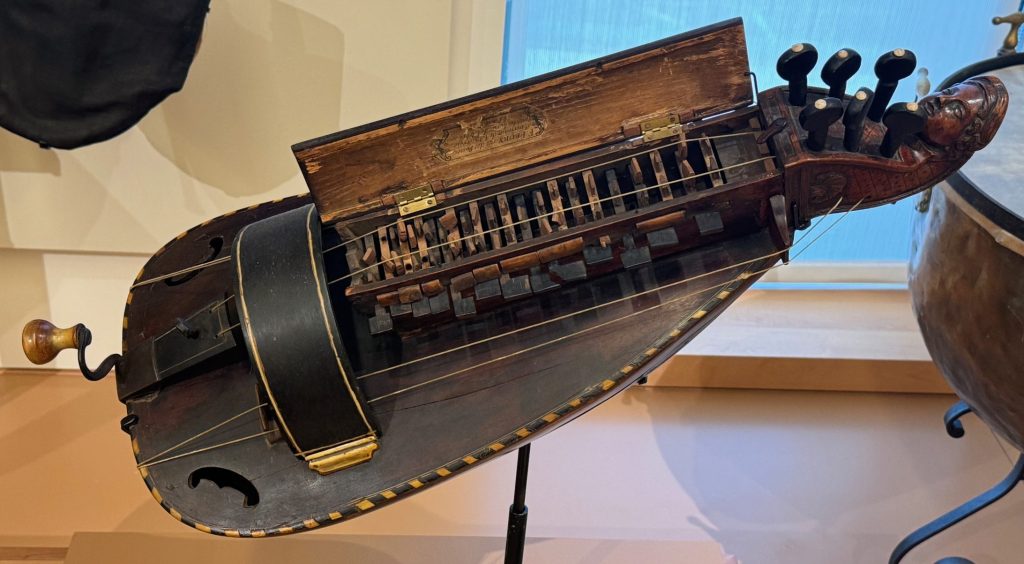
2.3. Brittany (Briezh)
There are three major minority regions for language, dance and music in France that bear special discussion: Brittany, the Basque Country, and the Alsace. These regions have very distinct dance and music traditions. We will save discussion of the Basque country until we discuss the dances of Spain – as the Basque homelands straddle the border between the two countries. So, we will concentrate here on the other two.
Brittany is unique in being the only Celtic language-speaking region outside of the UK. The Bretons in the west of the region traditionally speak a Celtic language related to Welsh and Cornish called Breton (or Brezhoneg). In the east of Brittany, they speak a Romance language called Gallo. Of course, today, the majority language is French.
The Bretons are not direct ancestors of the Gauls, the Celtic people who lived in France prior to the Roman invasion. They were ancient Britons from Devon and Cornwall in England, who migrated to the Roman province of Armorica under pressure from the Saxon invaders of England in the Dark Ages. They brought with them not only their Celtic language, but their culture as well, including their Celtic music.
The traditional music of the Bretons uses a small bagpipe called a binoù and an instrument like an oboe called a bombarde. The Bretons have also borrowed the Scottish Highland bagpipe as their own, which they call bagad.
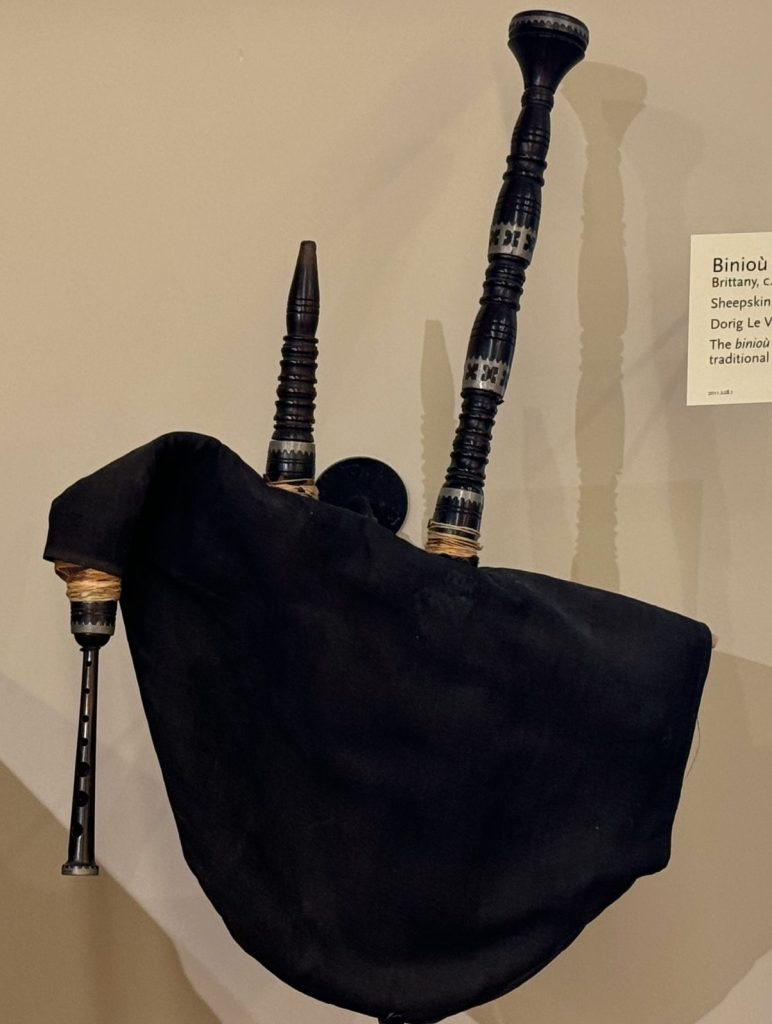
Breton women’s costumes are very distinctive. They are characterized by starched lace headwear. These hats are often very tall and impractical. The men wear black jackets and pants, but they often have a colorful vest on underneath.
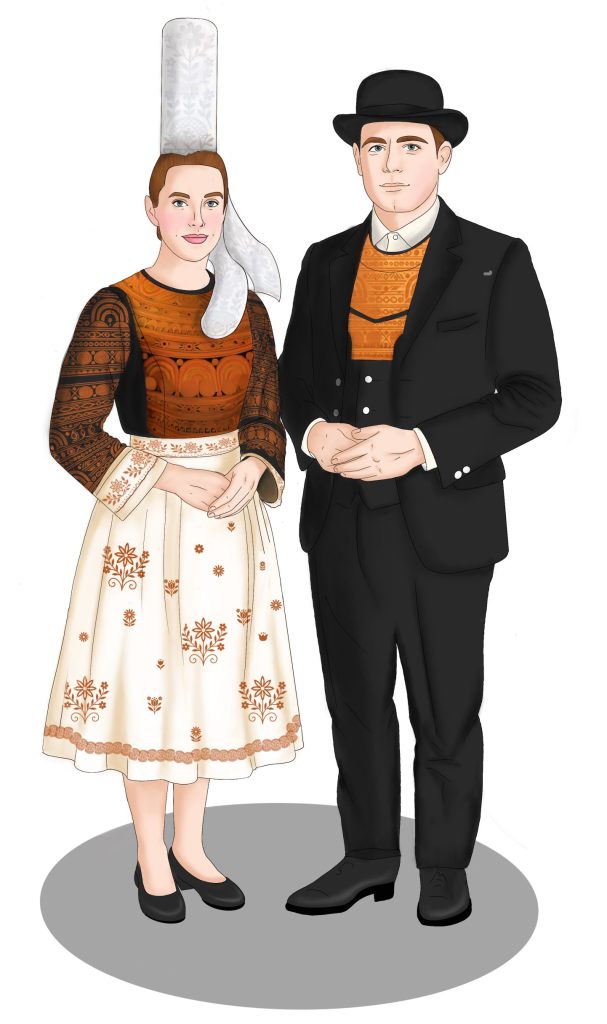
Breton dances are different from other dances in Western Europe. The Bretons have very few set dances. Instead, their dances typically done as open circles just like dances from the Balkans. As the Bretons are Roman Catholic, their dances progress clockwise. The characteristic dances are the Hanter Dro, An Dro, Laridé and the Gavotte.
- Bagad Kemper (Breton Bagpipe band): https://youtu.be/SzYsevqErUU
- An Dro Retournée: https://youtu.be/PG1wV1BD6mc
- Laride à 8 temps: https://youtu.be/xpIq95KEm5E
- Gavotte: https://youtu.be/d054qQb3pDg
- Le Bal de Jugon: https://youtu.be/QXMIp0YvRSc
2.4. Alsace
Another unique folkloric region is that of the Alsace on the border with Germany. Over the years, Alsace has been variously ruled by France and Germany and both French and German are spoken there. Commonly, the piano, accordion, and violin feature in musical groups throughout the Alsace. The men’s traditional dress has German influences in the embroidery and the cut. The women’s costumes also tend towards floral skirts and floral aprons, but they are known for their wide voluminous hats.
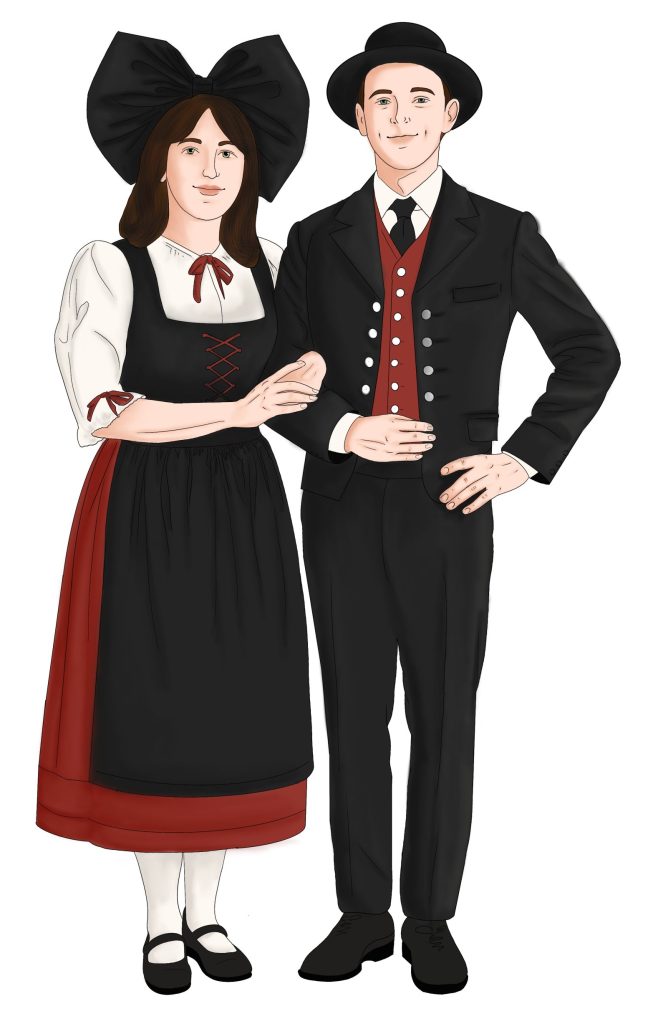
One of the most characteristic Alsatian dances is the Branle. Branles are an ancient dance form that used to be found throughout most of Europe. The term “Branle” comes from the French word meaning to wave or wag, which refers to the swaying motion of the footwork and arms. Today Branles are mostly found in the Alsace and in the Basque country.
- Historic Branle des Lavandieres: https://youtu.be/gZyiQpUXIAM
- Modern Branle (L’homme Qui Marche): https://youtu.be/wUkbpCniThs
3. Spain (España)
3.1. History and Geography
Spain, along with Portugal, occupies the Iberian Peninsula, which sticks out from southwestern Europe dividing the Atlantic Ocean from the Mediterranean Sea. The interior of the country is the historic kingdom of Castille. In the south, we find Andalusia, Murcia and Valencia which was the heartland of the Islamic Moorish leaders who crossed the ocean from North Africa in the 8th CE. In the far northwest, there is Galicia and Asturias, whose music shows Celtic influences. Next to them is the Basque Country and Navarre, which – as mentioned above – straddle the border with France. Finally in the East we have Catalonia.
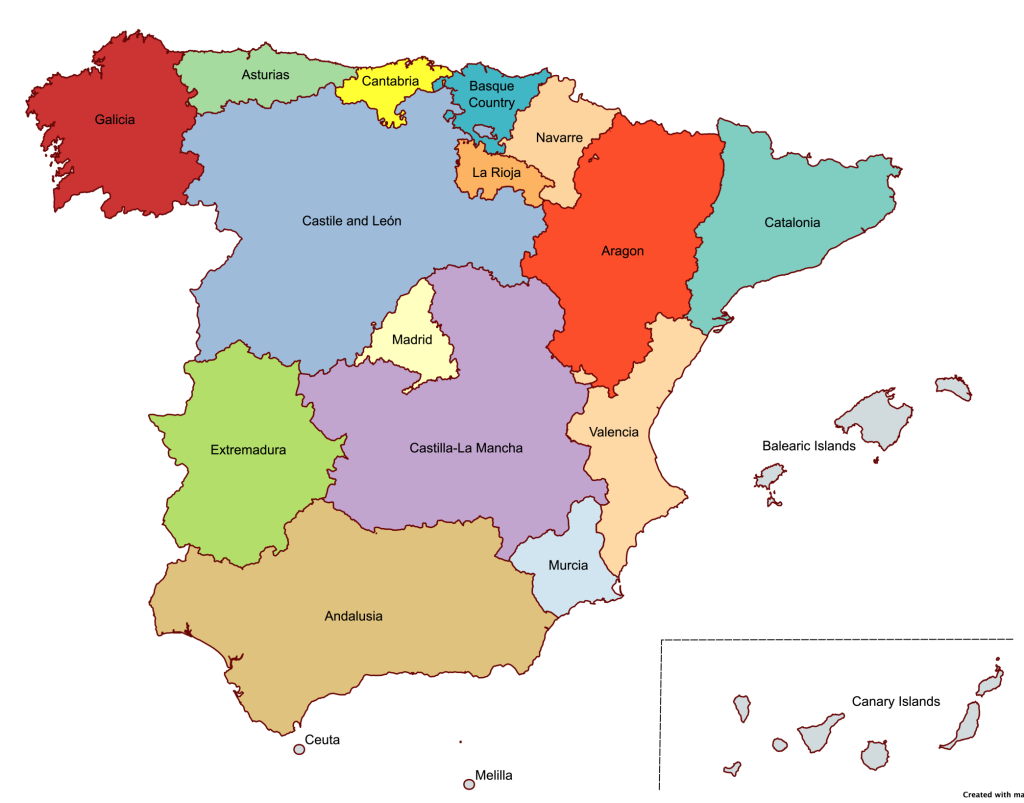
Spain was, of course, the center of a vast intercontinental empire which conquered most of South and Central America and their cultural influence on those regions was enormous. Spain itself has been a crossroads of culture for thousands of years. It was the Roman province of Iberia. The Roman province was conquered by the Germanic Goths and Visigoth tribes. For much of the Middle Ages, Spain was ruled by Islamic North Africans called the Umayyad Caliphate, but more colloquially known in English as the “Moors”. Moorish influence on Spanish music, cuisine, dance, and architecture is clear. Another important ethnic minority in Spain were the Sephardic Jews, who—during the Spanish Inquisition—were either forcibly converted or forced to flee to Greece and the Ottoman Empire, where they took much of their Spanish music and Ladino language. The Iberian Peninsula was reconquered by Christians from the north from the 13th to the 14th century and the country was divided into two major kingdoms (Aragon and Castille), which were unified into a single kingdom that was variously ruled by monarchs from the Austrian Hapsburgs and the French Bourbons.
During the next few centuries Spain’s imperial conquests included almost all of Central and South America, parts of Africa and countries as widespread as the Netherlands and the Philippines. We will discuss the influences of Spanish culture on the folk dances of the former colonies of Spain in the next chapter.
In modern times, Spain has been through several changes in system of government. In the 1930s a conflict of ideas between socialist republicans and fascist nationalists led to the Spanish civil war which was a preview of the second world war. The fascists won that war with General Franco emerging as one of the longest reigning dictators in Europe. His government survived right up until the 1970s, while other fascist regimes fell at the end of WWII. Post-Franco Spain is a constitutional monarchy which is a major player in the European Union.
3.2. Regional dress
Each region of Spain has its own regional costume. In Andalusia, the wear the Traje de Flamenco, which is the costume most people think of when they think of Spain. The women wear loose ankle-length dresses often in bright colors. The sleeves and the bottom of the skirt are typically fringed so they make a beautiful wave like motion when moved around. The women also typically wear a fringed shall and have their hair up in a tight bun. The men wear tight black pants and a short jacket. Both men and women wear hard soled black medium to high heeled shoes that make a lot of noise when stamped.

In Valencia, the women wear the traje de fallera and the men wear the traje de saragüell. The women’s costume has a long skirt with a lace apron and a tight bodice. The women wear a large bow in the back and two little bows on the sides. In Castille, they wear the traje de chulapa. The women wear a white blouse and a skirt decorated with polka dots. They wear a head scarf with flowers. The men wear short jacket, tight pants and a black cap.
3.3. Music and dance
Perhaps the most characteristic dance of Castillian Spain is the Flamenco, which has its origins in Andalusia. It is widely practiced by Spanish Roma. It was probably greatly influenced by the Moorish and Sephardic communities. It is characterized by rapid stamping of the heels or feet and clapping, accompanied by exaggerated flourishes of the arms and upper body. In modern times, Flamenco has become a highly stylized performance dance. The music that accompanies Flamenco is just as unique. The primary instrument is a guitar which is often accompanied by passionate songs that are almost shouted.
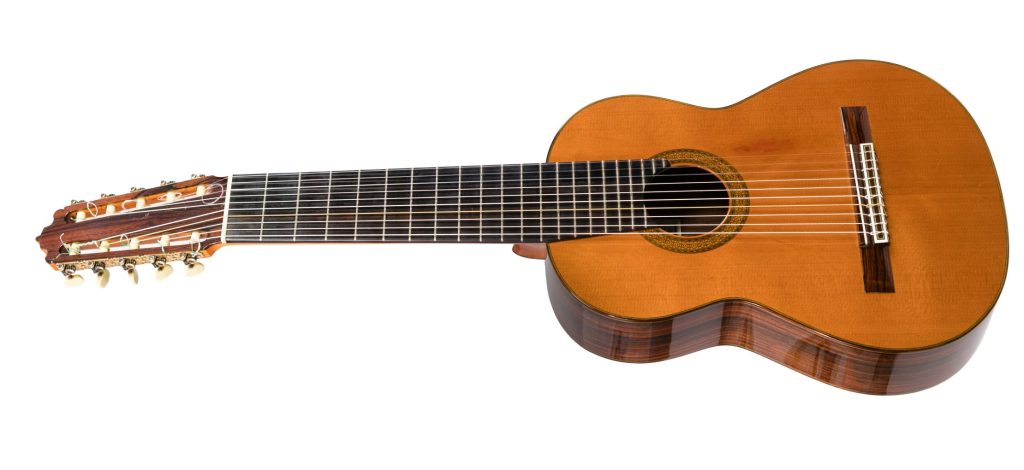
- Flamenco: https://youtu.be/cm9IYSDxagc
3.4. Catalonia
Spain is not a homogenous country. There are unique cultural identities throughout the country. There are two regions of Spain where they speak a different language and have different musical and dance traditions: Catalonia and the Basque Country.
The region called Catalonia crosses the border between France and Spain. The Catalonians speak a language distinct from Spanish. They also have a unique dance style known as the Sardana, which is danced in circles rather than in couples.
The men wear the tratge d’hereu. This includes a distinctive long red cap and a wide knotted belt at the waist. The women wear a thin net over their hair. Both men and women wear espadrilles as footwear.
Two common instruments of Catalonia are the diatonic “button box” accordion and the double reeded shawm. In a diatonic button box, each button plays two different tones—one tone as the bellows expand and a different tone as the bellows contract.
- The Sardana: https://youtu.be/Y9DakymXfHM
- Sardana Dancing in Barcelona: https://youtu.be/nIsaK53Nqug
3.5. The Basque country (Euskadi)
The Basque country also straddles the border between France and Spain, but the Basques speak a language unrelated to any other in Europe and is thought to come from a time before the Indo-Europeans conquered Europe in prehistoric times. Their dance traditions also may be pre-Indo-European. Their dances often have a ritualistic, pagan feel involving masks and grotesque costumes. Some people think that the dances of the Basques may be related to the Morris dancers of England and the Calușarii dancers of Romania.
Typically, men wear all white with red sashes around their waists and a beret called a txapela. The women wear long skirts, head scarfs and black aprons. Everyone wears a soft slip-on type shoe called an alpargata.
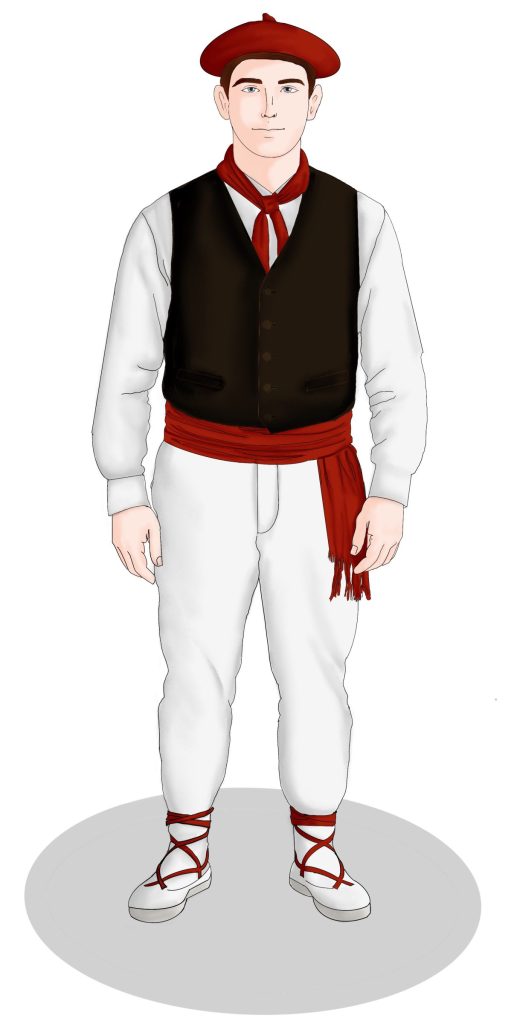
Basque folk music groups often include a diatonic button box accordion, which they call a trikiti plus three different types of flutes and four special kinds of drum. They also enjoy hearing the sounds of an ox horn and the sheepskin bagpipe. Basques have a reputation as excellent sheepherders. To defend themselves and their herds they often brought swords or axes. This reflects in the men’s weapons dances and stick dances.
One particularly unique characteristic of Basque dancing is that they often dance on stilts. The skill they exhibit twirling and turning while on stilts is amazing. The origin of this tradition is a bit obscure, but many people think the Basque shepherds stood on stilts so they could see their flocks in the rocky and mountainous terrain. This tradition of stilt walking then got transferred to the dance.
- Basque dance (Carnival de Lanz): https://youtu.be/Eo04dDeSQXQ
- Basque dancing on stilts: https://youtu.be/JZFZHCmFuto?si=N091lDHZclaPJEW1
4. Portugal
4.1. History and Geography
Portugal was another imperial power, with colonies in Brazil, Africa, and East Asia. They are known as a seafaring nation with a strong fishing industry. Portugal is boarded on the north and east by Spain and on the west and south by the Atlantic.
Portugal’s early history is the same as Spain’s. It had an indigenous Celtic population, it was ruled by the Romans, the Visigoths, and the Moors. It became an independent monarchy in 1143. It was a colonial power that held power in places like Brazil, Angola, Mozambique, Guinea-Bissau, Macau, East Timor, and Cape Verde. Also, like Spain, it was under a fascist dictatorship from the 1930s into the 1970s but is now a parliamentary democracy.
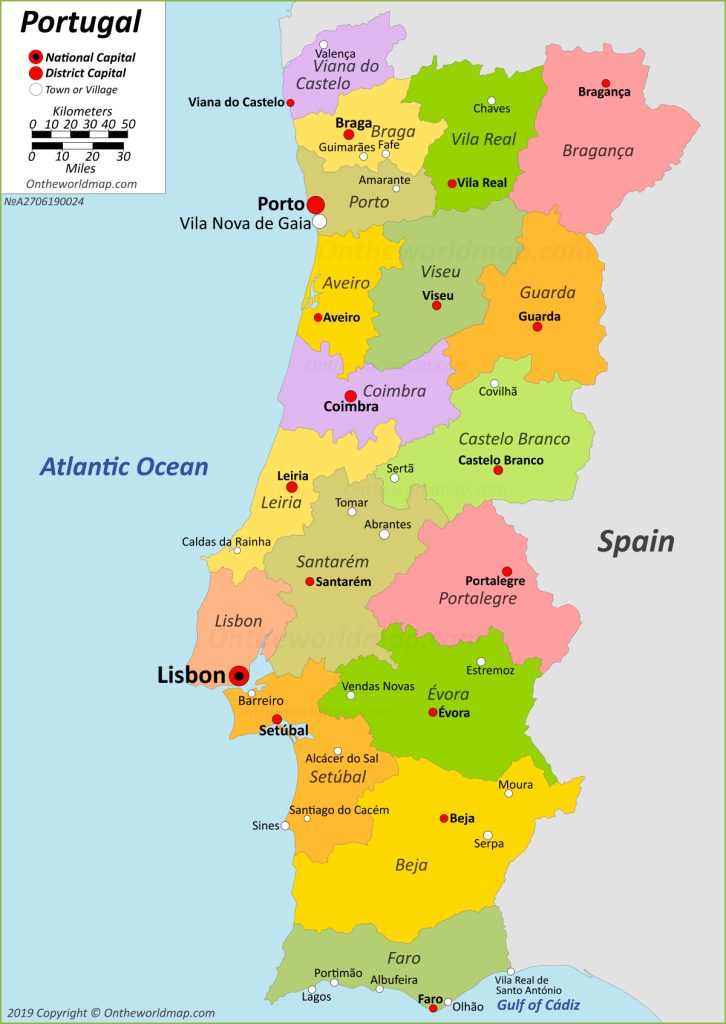
4.2. National Dress
Although there are many regional variants, the most common women’s costume involves a floral skirt, white blouse and an embroidered shawl crossed over in front and secured at the belt level. The women also typically have a floral headscarf knotted in the front. The men dress in white shirts and black pants and jackets. They wear a red knotted cummerbund around their waists.
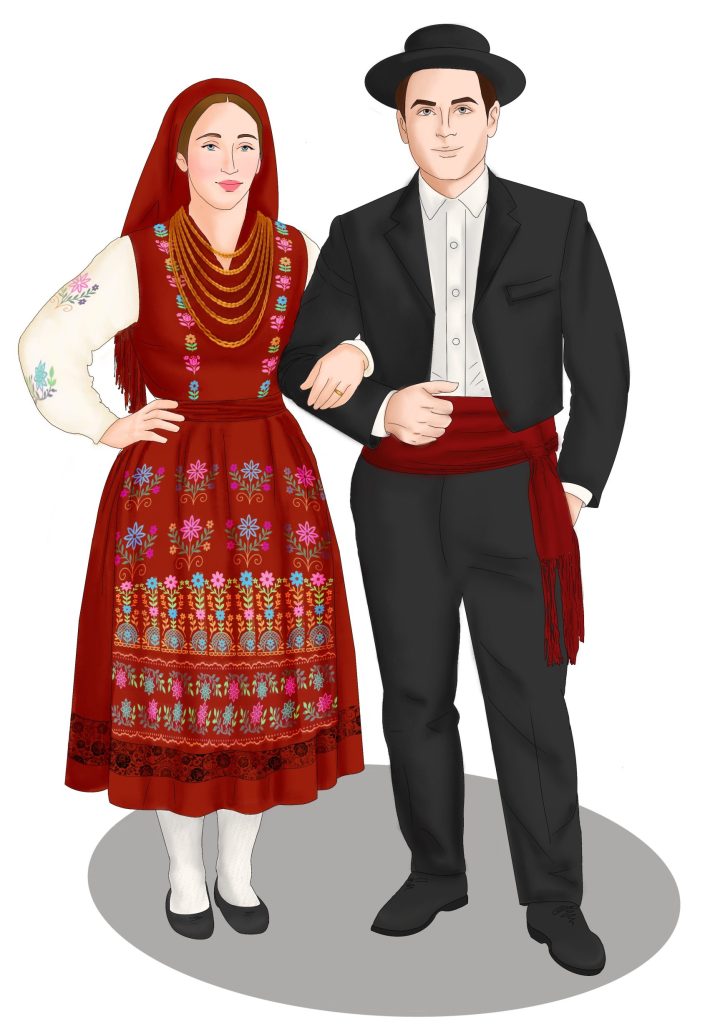
4.3. Music and Dance
Portuguese musical groups prefer using the concertina over accordions of any type, and they employ several different types of violas. Their 12-string guitar accompanies the Fado songs.
The most famous dance from Portugal is the Vira, which is a dance where the dancers spin around quickly with their arms in the air. Other dances include the Chula, and the Corridinho.
Although many people associate castanets mostly with Flamenco, Portuguese folk dancers often click a pair of castanets as they dance. They may also dance with empty hands elevated in a limp-wristed fashion as if they held castanets.
- Portuguese Vira: https://youtu.be/gYfCRPnE1oU
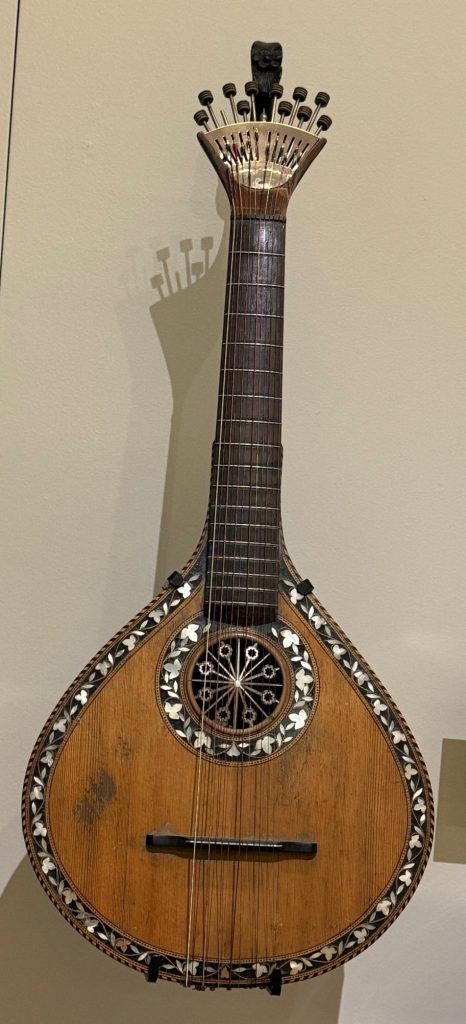
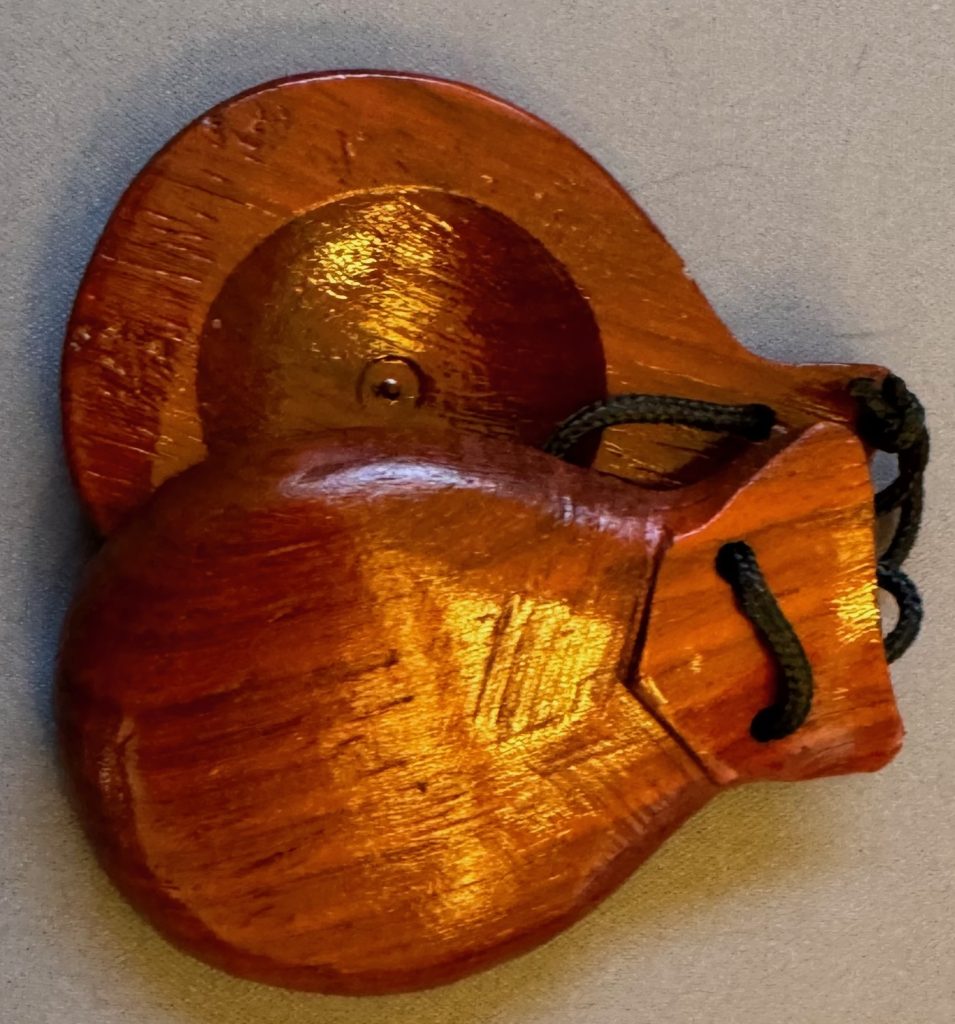
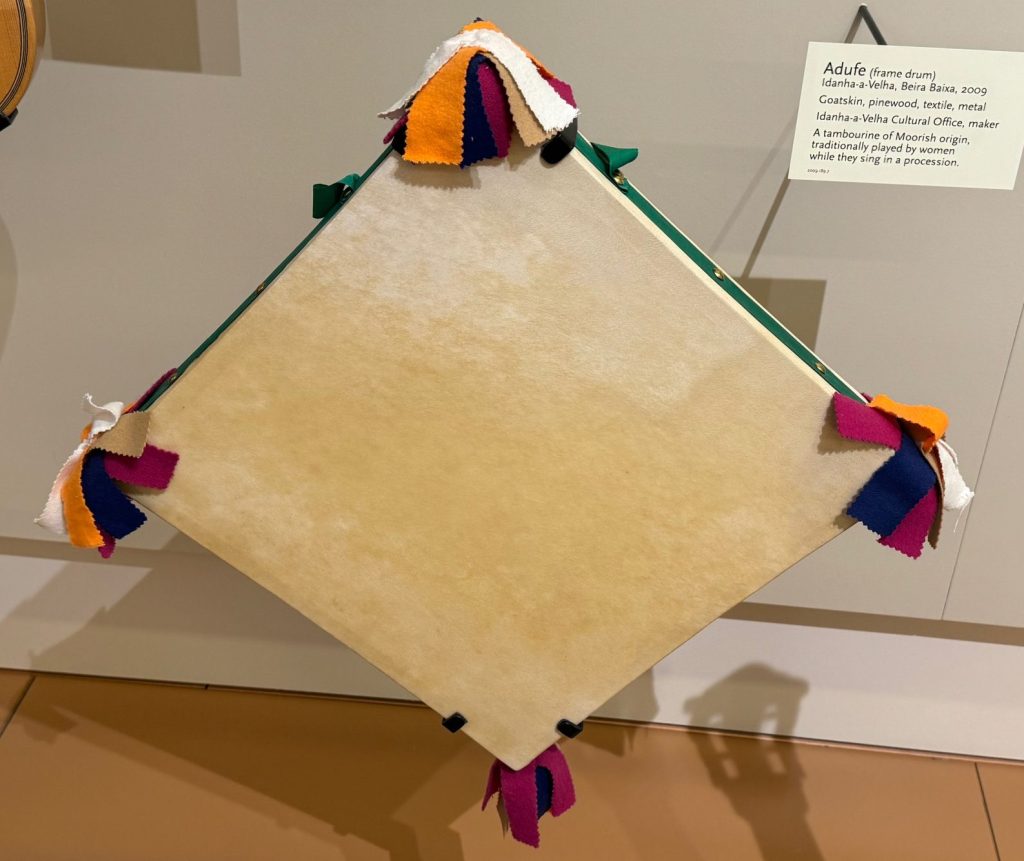
5. Italy (Italia)
5.1. History and Geography
Italy occupies the Italian peninsula, the boot shaped piece of land that juts out into the Mediterranean. In the north, it borders France, Switzerland, Austria, and Slovenia. There are two major islands that are also part of the country: Sardinia and Sicily.
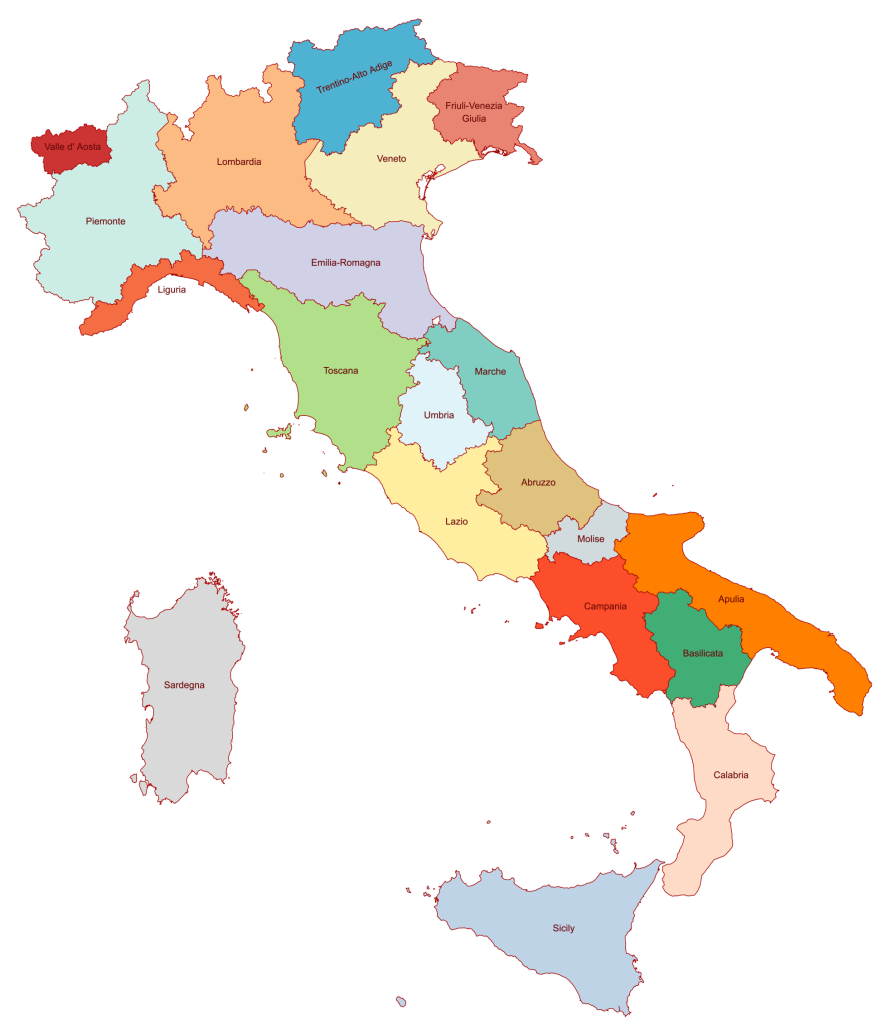
With Rome as its capital, it should be obvious that it was the heartland of the Roman empire, although there were also other ethnic groups living there in ancient times including some Celtic tribes and the Etruscans. When the Roman Empire finally collapsed in 476 CE, the country became fragmented, but it was also widely viewed as the center of Christianity with the catholic Popes living in the papal states in Rome. Despite being politically fragmented, Italy was in many ways the center of great cultural change with the Renaissance. Famous artists, authors and philosophers all flourished in cities like Venice, Florence, Naples, and Rome.
Despite being a patchwork of city-states and principalities, the county had a reasonably unitary cultural identity based on shared/similar language varieties. The unified Kingdom of Italy emerged in the mid 1800s under the house of Savoy. Like its larger neighbors, it had ambitions for empire, and it controlled what is now Tunisia, Somalia, Ethiopia, Eritrea, Libya, parts of Sudan, and parts of Albania. Like many empires of the 19th century, it was brutal in its oppression of its client states. Italy was on the winning side in the first world war, but nevertheless due to economic and social upheavals, it became the first fascist state in Europe with the rise of Mussolini, and it sided with the Germans as one of the major Axis powers during the second world war. Mussolini was overthrown during the invasion of Italy by the Allies and eventually executed by a mob in 1945. Since then, Italy has become a democracy with one of the largest economies in the European Union, but famously unstable politics.
5.2. National Dress
Men’s costumes in Italy are a lot more colorful than the dress worn by men in other Romance countries. They often wear brightly colored and embroidered vests, knee length britches and sometimes a neckerchief. Women wear calf or ankle length skirts, tight bodices, puffy shirts, and head scarves.

5.3. Music
Italy has some interesting regional musical traditions. Some of their music is played on the baghet and zampogna bagpipes. Italy has a lengthy list of musical instruments in current use. Italian music makes extensive use of the fiddle and accordion. Different regions employ harps or zithers; guitars and fiddles in one-stringed and three-stringed configurations are common. Italians like a parade of percussion instruments including the tambourines, drums, castanets, and cog-rattles or ratchets.
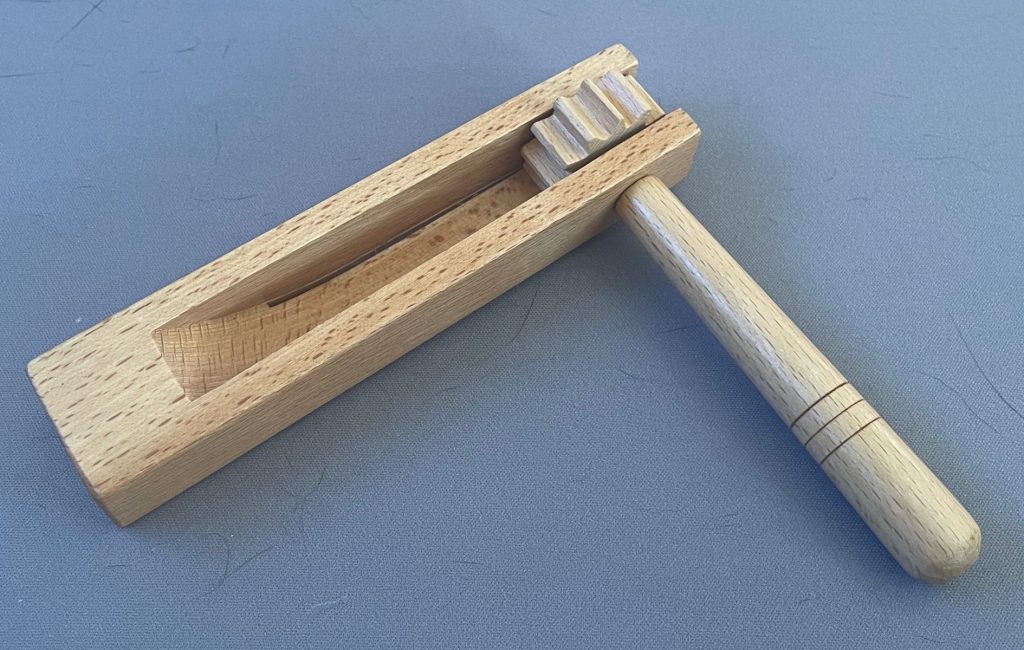
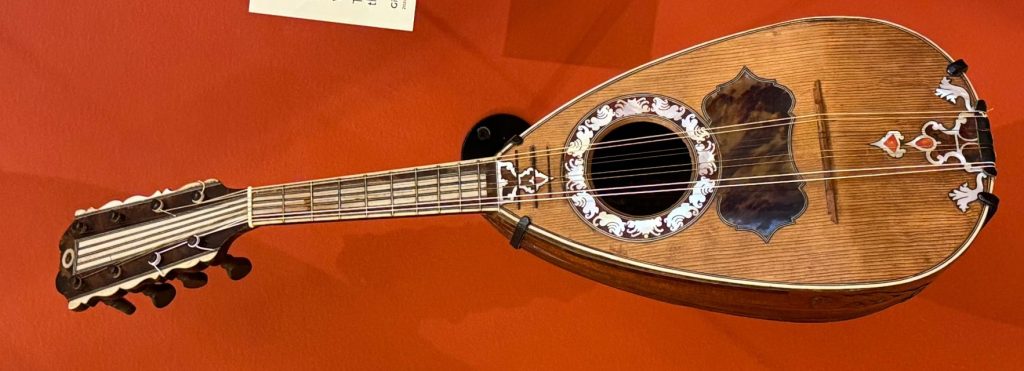
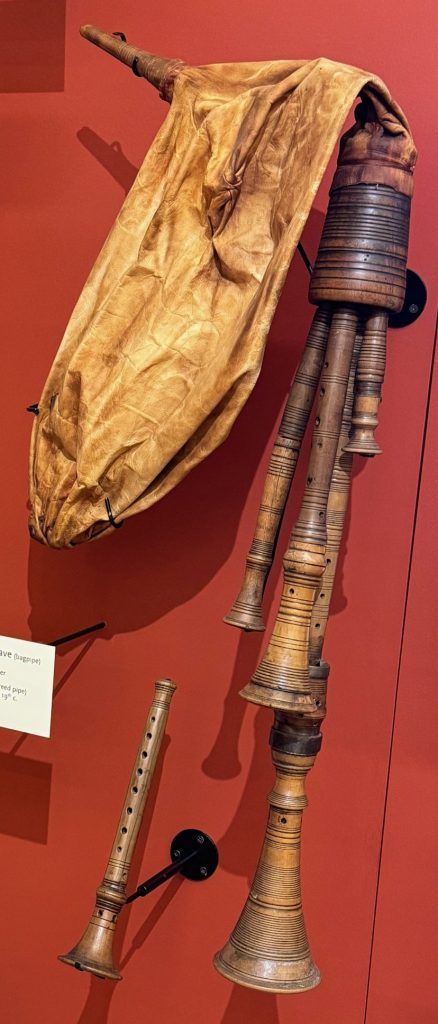
- Zampogna Bagpipe music: https://www.youtube.com/watch?v=eBQ3_W8a6yw
- Baghet bagpipe and dancing: https://youtu.be/g5VjFenf6B8?si=9-JqKg5-KQgvfgrb
- Sardinian Singing (Cantu de Tenore), with bonus dance: https://youtu.be/hL-05B3PB0M
5.4. Italian Dances
One iconic dance of Italy is the Tarantella, a dance done to ward off the poisonous bite of the tarantula spider. The dance involves shaking and jumping movements that are meant to imitate the effects the poisonous bite has on the victim. Tarantellas are usually danced with each of the dancers holding a tambourine. Each region has their own Tarantella dance. Other Italian dances include a variety of couple mazurkas, waltzes, and polkas.
One unique regional dance tradition are the circle dances of Sardinia, which are interestingly similar to the dances of Brittany and the Balkans. Dancers hold themselves in tight circles and make small tight movements while singing a capella polyphonic (close harmonic) songs. This dance is called the Passu Torrau.
- Passu Torrau: https://youtu.be/emeOe_EruEc
- Tarantella: https://youtu.be/XULgXK6vVMg
6. The Balfolk Movement
In the 1970s, there was a revival of interest in traditional folk music and folk dance in western Europe. This gave rise to the emergence of regular music and participatory dance events called Balfolk. Balfolk is popular throughout all the Romance countries, but particularly in France and Italy. You also find Balfolk dances in Belgium, the Netherlands, Germany and even into Poland. You can attend Balfolk in most major towns and villages at least monthly but frequently more often. There is always live music and there is a fairly standard repertoire of dances. They do many of the dance types discussed in this chapter including Breton Dances, Waltzes, Polkas Mazurkas, Ronds, Branles, and Bourrées.
- Balfolk Video: https://youtu.be/_Ccw80RX6K0?si=lAqD1qhrS4sb2H8S
- Chapelloise: https://youtu.be/jdu-4ciS-Uk?si=fT6559cOAfDMCy3c
Further Reading
- Alford, Violet (1952), Armstrong, Lucile (1948, 1951), De Cesare (1997), Galanti (1950), Gurzau (1981), Marcel-Dubois and Andral (1950), Tennevin and Texier (1951). Ysursa, John (1995), LeBlanc (n.d.), Pierre and Sigard (1999), Bross (2004), Le Barbenchon (1990, 1991, 1992). See the references at the end of the book for full citations.
- https://www.sfdh.us/encyclopedia/branle.html
- https://blog.spainintheusa.org/5-traditional-spanish-outfits-to-discover-7f24dc9bd4d
- https://sensationalspain.com/spanish-traditional-dress/
Suggested Dances for Teaching
France
- An Dro: http://folkdancemusings.blogspot.com/2014/01/an-dro-retournechanj-tu-brittany.html
- Branle de la fosse aux loups: http://folkdancemusings.blogspot.com/2017/04/branle-de-la-fosse-aux-loups-france.html
- Bourrée Droite à 2 temps: https://folkdancemusings.blogspot.com/2022/07/bourree-droite-2-temps-france.html
Spain/Catalonia
- Sardana Curta (Catalonia): https://folkdancemusings.blogspot.com/2020/09/sardana-curta-catalonia.html
- Seguidillas: http://folkdancemusings.blogspot.com/2014/01/seguidillas-de-gran-canaria-canary.html
- Baztan Danza (Basque): http://folkdancemusings.blogspot.com/2014/10/baztan-dantza-basque.html
Italy
- Mazurca di Sant Andieu: http://folkdancemusings.blogspot.com/2014/01/mazurca-di-santandieu.html
- Sicilian Tarantella: https://folkdancemusings.blogspot.com/2023/04/sicilian-tarantella-paul-erfermichael.html
- Passu Torrau: http://folkdancemusings.blogspot.com/2014/10/passu-torrau-bagnoli-version-italy.html
Portugal
- Malhao: http://folkdancemusings.blogspot.com/2014/05/malhao-portugal.html
- Eviera Cidera: https://folkdancemusings.blogspot.com/2023/06/erva-cidreira-portugal.html
Discussion Questions
Discussion Question 1
Despite their close historical and linguistic ties, the dances of the Romance countries are quite diverse. Speculate on why that might be the case.
Discussion Question 2
In regions like the Brittany, the French Republic has an official policy whereby parents are only allowed to use the French spelling of names for their children and not Breton ones. But there are no regulations against Breton music or dance. Why do you think Breton language is regulated but the music and dance are not?
Media Attributions
- Figure 5.1: Map of the Romance Countries of Western Europe © John W. W. Powell (2024). Romance Countries. Additional geospatial data cited in map. Used here with permission.
- Figure 5.2: Regions of France © Map Chart is licensed under a Public Domain license
- Figure 5.3: Hurdy-Gurdy, France © Musical Instrument Museum, Phoenix. Used with permission.
- Figure 5.4: Binou © Musical Instrument Museum, Phoenix. Used with permission
- Figure 5.5: Breton Costumes © Asma, used with permission
- Figure 5.6: Costumes from Alsace © Asma, used with permission
- Figure 5.7: Regions of Spain © Mapchart.net is licensed under a CC BY-SA (Attribution ShareAlike) license
- Figure 5.8: Flamenco Costume © Asma, used with permission
- Figure 5.9: Spanish Guitarra © Musical Instrument Museum, Phoenix. Used with Permission
- Figure 5.10: Basque dancers in traditional costume and footwear © Asma, used with permission
- Figure 5.11: Map of Portugal © ontheworldmap is licensed under a CC BY-NC-SA (Attribution NonCommercial ShareAlike) license
- Figure 5.12: Portuguese folk costumes © Asma, used with permission
- Figure 5.13: Guitarra Portuguesa © Musical Instrument Museum, Phoenix. Used with permission
- Figure 5.14: Castanets © Andrew Carnie, personal collection
- Figure 5.15: Adufe, Portugal © Musical Instrument Museum, Phoenix. Used with permission
- Figure 5.16: Map of Italy © Mapchart.net is licensed under a Public Domain license
- Figure 5.17: Italian costumes © Asma, Used with permission
- Figure 5.18: Cog-rattle or ratchet © Andrew Carnie, personal collection
- Figure 5.19: Mandolin, Italy © Musical Instrument Museum, Phoenix. Used with permission
- Figure 5.20: Zampogna and Giaramella, Italy © Musical Instrument Museum, Phoenix. Used with permission

